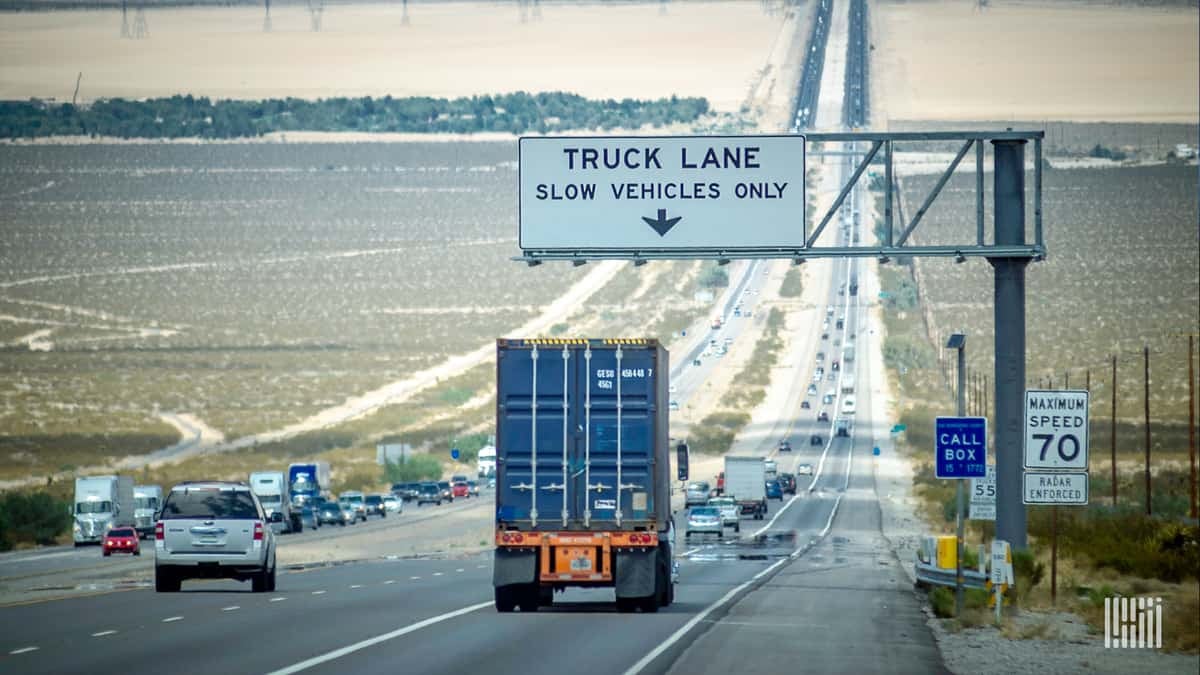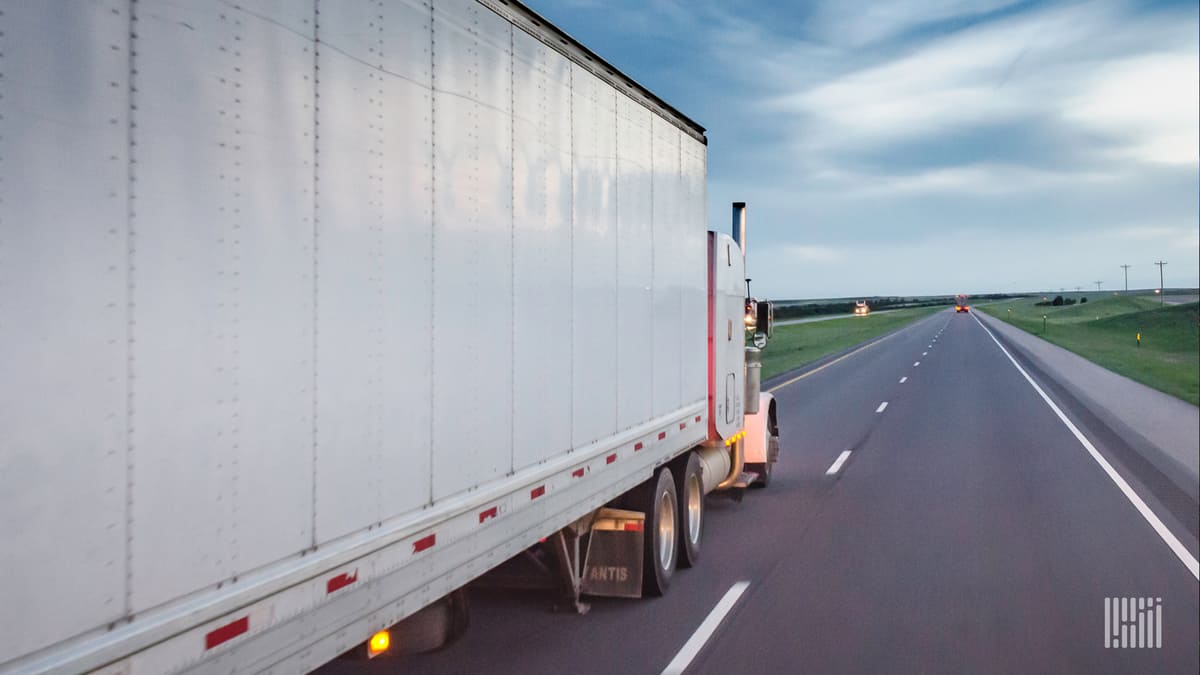Author’s disclosure: I am not an investor in Optimal Dynamics, either personally or through REFASHIOND Ventures. I have no other financial relationship with Optimal Dynamics.
Optimal Dynamics, a startup that is building software that automatically optimizes trucking fleet operations using its proprietary CORE.ai solution, announced on July 7 that it raised a $4 million seed round.
CORE.ai, Optimal Dynamics’ Software-as-a-Service (SaaS) product, uses a proprietary technology called High-Dimensional Artificial Intelligence that empowers truckload operations to automate and optimize the entire planning and decision-making process, including detailed strategic analysis, automated load acceptance and dispatching.

(Photo: Jim Allen/FreightWaves)
The round is led by Fusion Fund. Other investors in the round include The Westly Group, TenOneTen Ventures, Embark Ventures, FitzGate Ventures and Newark Venture Partners. According to Crunchbase, Optimal Dynamics raised $450,000 in July 2017. That round was led by FitzGate Ventures.
I asked Daniel Powell, CEO and Founder, what Optimal Dynamics’ plans are for the next 18 to 24 months.
He said, “The next 18-24 months will be completely focused on the wide rollout of CORE.ai to customers that are managing for-hire carriers, private fleets and dedicated capacity, in addition to the continued improvement of our product. We will also be looking to drive partnerships with current technology providers to further improve our solution.”
He continued, “Currently, we are focusing on for-hire carriers managing fleets of 150 trucks or more, private fleets of any size, and companies managing dedicated fleets of any size.”

(Photo: Jim Allen/FreightWaves)
Defining the problem that Optimal Dynamics’ CORE.ai solves for trucking fleets
A truck fleet manager encounters the dynamic assignment problem whenever he or she makes routing, assignment and scheduling decisions matching limited resources (trucking capacity, tractor trailers, drivers) with demands (loads) that arise over time.
The fleet manager hopes to maximize profits across the entire fleet network over time – a month, a quarter or a year, while also working to meet driver requirements for getting home as well as maximizing service for the shipper.
With each shipment request, the entire system or network changes in a way that is random, and difficult to predict. To adequately manage the network, fleet managers must attempt to account for possible future states of the system.
The dynamic assignment problem is a subset of a class of problems known as dynamic resource allocation problems. Dynamic resource allocation problems deal with the allocation of resources in an optimal manner over space and time when conditions are uncertain and changing randomly in complex networks.
It is a problem that is present in any industry or business setting where scarce resources must be deployed over a large and distributed network to satisfy demand in real time. It is the reason why managing a fleet of trucks is such an arduous task. One that becomes more challenging as the fleet grows.
According to Daniel Powell, Optimal Dynamics will initially focus most of its sales and marketing efforts on in-house or private full truckload and long-distance operators. The FreightWaves Freight Intel unit and other industry analysts estimate this market to be worth roughly $250 billion in annual revenues in the U.S.

(Photo: Jim Allen/FreightWaves)
CORE.ai suits for-hire trucking companies too. Combining the market opportunity presented by private and for-hire trucking fleets roughly doubles the size of the prize the company is pursuing.
Concurrent with closing this round, Optimal Dynamics recruited an industry veteran, Chris Torrence, to join the team as Vice President of Strategic Partnerships. I asked him about his career so far.
He said, “I began my logistics career while proudly serving in the U.S. Air Force. Following my military service, I held a variety of roles at C.H. Robinson, Uber Freight, FourKites and Arrive Logistics.”
He makes the following observation about why Optimal Dynamics is different from other alternatives potential customers might consider: “CORE.ai isn’t your run-of-the-mill transportation management system load planning or routing tool. As you have covered in your column at FreightWaves, the logistics space is saturated with various digital freight brokers and digital freight marketplaces, real-time visibility providers, and everyone else in between who claim to leverage artificial intelligence and machine learning.”
He added, “Once I could look past the technical terminology, I realized that Optimal Dynamics has truly incorporated High-Dimensional AI in conjunction with stochastic optimization to create a platform that works. As a result, the team is already engaged with well-known Fortune 500 shippers, major fleets and large for-hire full truckload carriers.”
Before Torrence joined the company, a large retailer offered to buy Optimal Dynamics on three separate occasions between the summer of 2016 and late 2019. The most recent attempt followed a simulation demonstrating that CORE.ai could automatically optimize a trucking fleet of 100,000 trucks on the road in real time with minimal latency for dispatchers and other users of the platform.
Daniel Powell tells me that in another instance, Optimal Dynamics helped one of its earliest customers realize the following results – an 18% improvement in asset utilization, a 13% decrease in costs and a 90% improvement in automation.
Two large European container shipping companies have also explored using the technology for container shipping operations as well as for managing their trucking fleets. The larger of the two companies ultimately decided to use CORE.ai as it strives to profitably grow its freight trucking operations in the U.S. and Asia. In conversations with various investing and operating executives at the company, I am told the company is continuing to explore CORE.ai’s applicability within its container shipping business.

(Photo: Jim Allen/FreightWaves)
Conclusion
In the June 2020 issue of The Economist Technology Quarterly, Artificial Intelligence And Its Limits, Tim Cross makes the following observation in an article titled Reality Check: “Yet lately doubts have been creeping in about whether today’s AI technology is really as world-changing as it seems. It is running up against limits of one kind or another, and has failed to deliver on some of its proponents’ more grandiose promises.”
This is the first of a multi-part series of commentaries on how AI technology can transform how we solve the problems that are pervasive within industrial supply chains, contrary to the conclusions expressed in the Economist’s Technology Quarterly.
The technology that Optimal Dynamics is bringing to market is based on decades of academic research applied to problems faced by companies in different industries. In my next commentary in this “AI in Supply Chain” series, I will delve into that work, and why it could be transformative for the supply chain logistics sector. I will also explore why work of that nature could be transformative for industrial supply chains more generally.
The goals of this series are: first, to uncover the situations in which artificial intelligence is producing results; second, to learn why problems in legacy industries pose such a challenge for artificial intelligence systems; and third, to learn what is required to fulfill AI’s potential in legacy industries. It will build on Commentary: How can machine learning be applied to improve transportation?, and Commentary: How can machine learning be applied to improve transportation?, which ran on FreightWaves on July 23, 2019 and July 30, 2019 respectively.
If you are a member of a team working on innovations that you believe have the potential to significantly refashion global supply chains we’d love to tell your story in FreightWaves. I am easy to reach on LinkedIn and Twitter. Alternatively, you can reach out to any member of the editorial team at FreightWaves at media@freightwaves.com.







